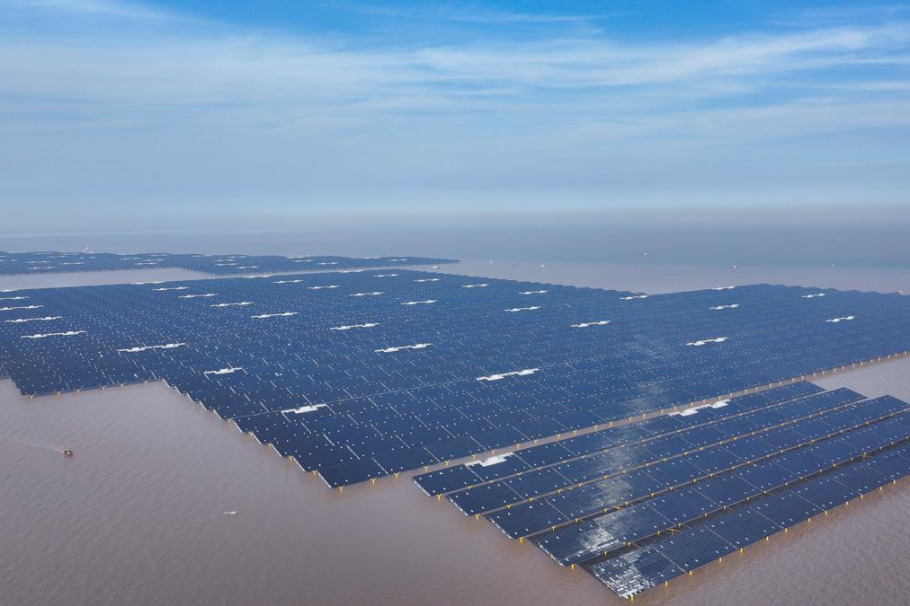Country's growth set to provide huge global opportunities


Since China launched its first Five-Year Plan (1953-57), the Chinese economy has transformed dramatically, becoming the world's second-largest in terms of GDP as well as entering the ranks of the world's upper-middle-income countries.
The 14th Five-Year Plan (2021-25) sets out economic development targets that put a strong focus on modernizing the industrial economy through the development of technology and innovation.
A key long-term vision set out by the Chinese leadership recently is the objective for China to become a high-income nation by 2035. The rapid increase in China's per capita household income over the next 15 years will help to drive strong expansion in the size of China's domestic consumer market. This will make China an increasingly important export market for other Asia-Pacific economies for a wide range of goods and services, which means huge opportunities for the world.
The development targets for the 14th Five-Year Plan period put a strong focus on technology, the environment and boosting domestic consumption. In the area of industrial policy, the plan puts a strong focus on the development of technology and a modern industrial system as well as boosting innovation, with greater reliance on domestic technology rather than relying on imported foreign technology.
Accelerating green and low-carbon development and reducing carbon emissions is also a key goal, to meet UN climate change targets. China's policy aim is to reach peak carbon emissions before 2030.
An important target for the 14th Five-Year Plan is the "dual circulation" strategy to strengthen domestic consumption while continuing to develop the growth of China's export sector through a shift toward advanced manufacturing and multilateral trade liberalization initiatives with trade partners. Market reforms will be encouraged to allow more efficient allocation of resources, which should help to boost the pace of growth of domestic consumption and investment.
To become a moderately developed nation, China will become a high-income nation by 2035, rising beyond its current status as an upper-middle-income developing country as defined by World Bank income thresholds for countries worldwide. This will result in a very large rise in China's total GDP as well as the size of its domestic consumer market by 2035. This will reinforce the dual circulation strategy by significantly increasing consumption expenditure and making consumer spending an increasingly important contributor to annual GDP growth.
The rapidly growing size of China's domestic consumer market has become an increasingly important growth driver for China's overall economic growth, as well as for the Asia-Pacific region. With the total size of China's GDP having risen by more than $8.5 trillion since 2010, the rest of the Asia-Pacific region has become increasingly integrated into the Chinese manufacturing supply chain for raw materials and intermediate goods, while China has also become a key market for services exports.
By 2025, China's GDP is forecast by IHS Markit to increase by an additional $7.8 trillion, which will drive further rapid growth in exports from the rest of the Asia-Pacific region to China.
China is also becoming an increasingly important source of foreign direct investment into other Asia-Pacific nations, through investment across a wide range of industries, including manufacturing and infrastructure. The Belt and Road Initiative has been a major channel of infrastructure investment flows from China to many other Asian countries.
During the 14th Five-Year Plan, the implementation of the Regional Comprehensive Economic Partnership free trade agreement among 15 Asia-Pacific nations-China, Japan, South Korea, Australia, New Zealand and the 10 ASEAN nations-will also help to drive the growth of Asia-Pacific trade and investment flows. The RCEP is the world's biggest free trade agreement measured in terms of GDP, larger than the Comprehensive and Progressive Agreement for Trans-Pacific Partnership which the Chinese leadership has expressed the willingness to join, the European Union, and the US-Mexico-Canada Free Trade Agreement.
During the second half of 2020, China has led the global recovery from the COVID-19 pandemic, with domestic economic activity in the country rapidly returning to more normal levels for both manufacturing and services. A key strength supporting China's rapid economic rebound is the size of the domestic consumer market, which has helped to support improving new orders in both the manufacturing and services sectors.
China's GDP growth rate is forecast by IHS Markit to rebound to a pace of 7.3 percent year-on-year in 2021, providing a key growth engine for global economic recovery. Continued strong growth is also forecast over the medium-term economic outlook to 2025.This rapid pace of growth will be a key driver for the export sectors of many other Asian economies, reflecting the importance of China as a key market.
The author is APAC chief economist at IHS Markit.
- Defense spokesman: PLA drills around Taiwan justified
- Chinese fantasy animation hits Vietnamese theaters amid holiday surge
- BBC documentary reveals Guangdong's wild side
- Hangzhou 'Bunny Officer' goes viral for gentle traffic management
- From lab to life: humanoid robots' 'coming-of-age' year
- Video of PLA's drills around Taiwan Island released





































